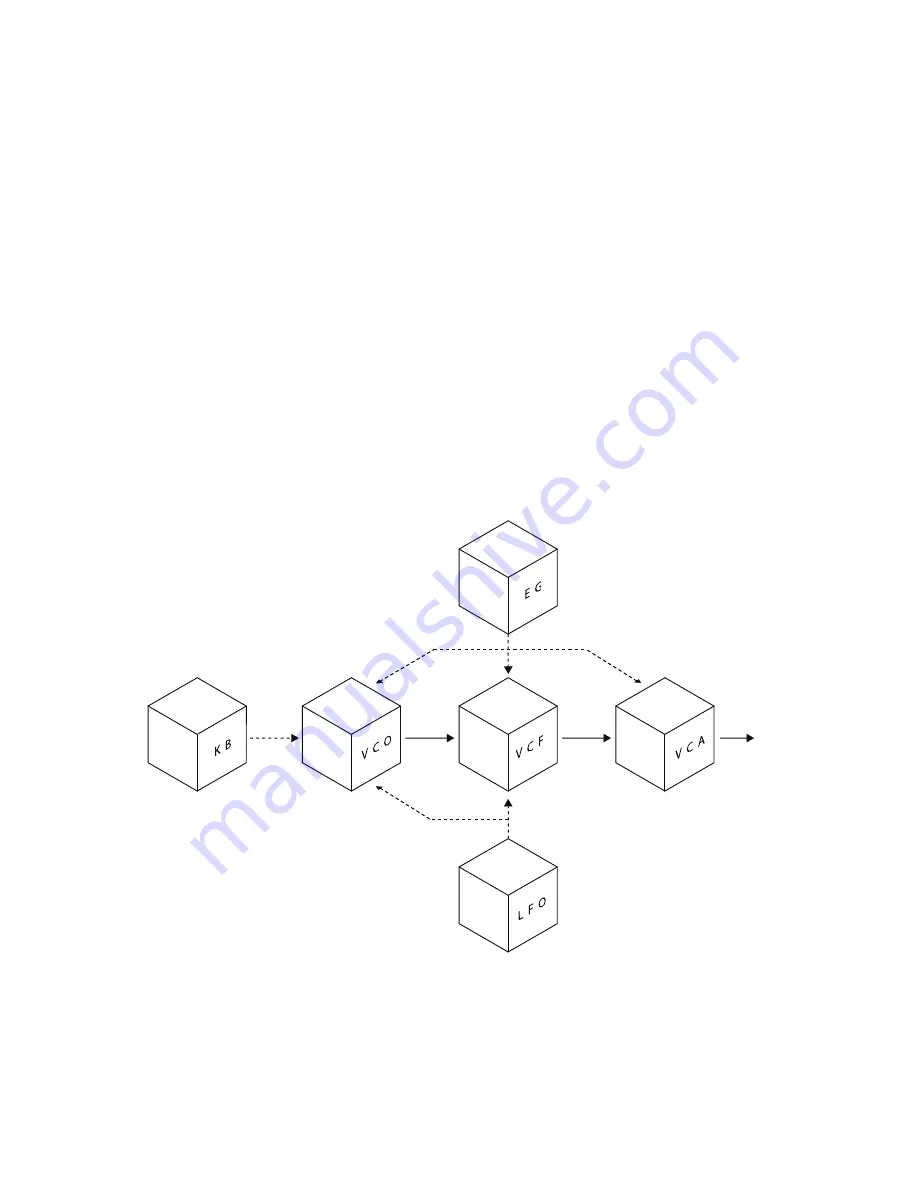
7
ANALOG SYNTHESIZER BASICS
An analog synthesizer generates two types of signals: Audio Signals and
Control Signals. Audio signals are the sounds you hear emanating from the
sound creation circuits of an instrument. Control signals, on the other hand,
are used to change and/or modify the settings of these circuits. Due to the
analog nature of the instrument, these Control signals carry a continuously
variable voltage level. These signals are referred to as Control Voltages,
and most analog synthesizer components are “Voltage Controlled.” An
additional type of control signal is known as a Gate, or Trigger, which is
simply used to initiate an event. Changing Pitch or frequency is an example
of using a Control Voltage; playing a key on a keyboard is an example of
generating a Gate signal.
In an analog synthesizer, each set of circuits performs a particular job. The
oscillators, filters, and envelopes, etc. are each self-contained modules.
By design, these modules are wired together using both audio signals and
control signals. However, patch points and patch cables can allow these
modules to be reconnected in new ways. This is the basis for the term
Modular Synthesizer. The first Moog synthesizers were modular synthesizers.
In this diagram of the Werkstatt modules, the solid lines represent audio
signals, and the dotted lines represent control signals. The definitions and
functions of each module are described in the Werkstatt Features and
Controls section.
Содержание Werkstatt-01
Страница 1: ...ASSEMBLY INSTRUCTIONS USER S MANUAL Analog Synthesizer Moogfest 2014 Kit ...
Страница 5: ......







































